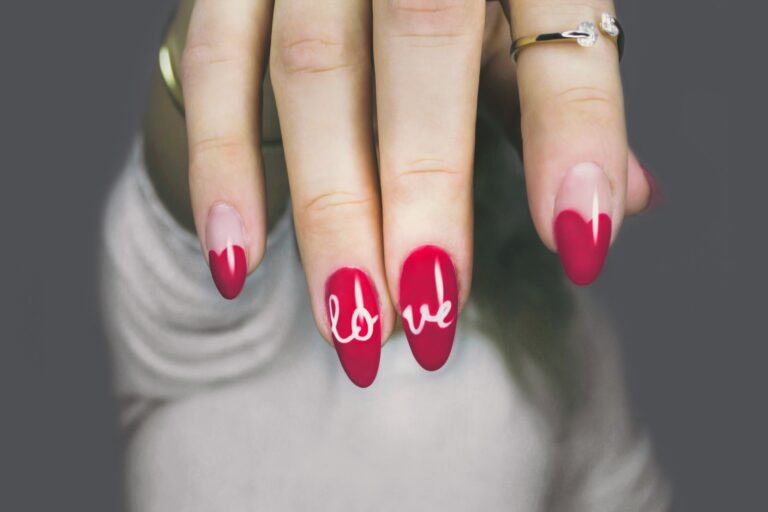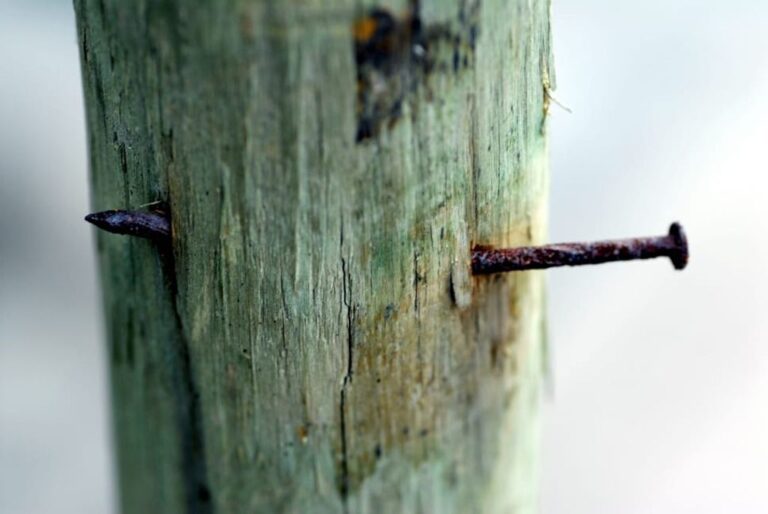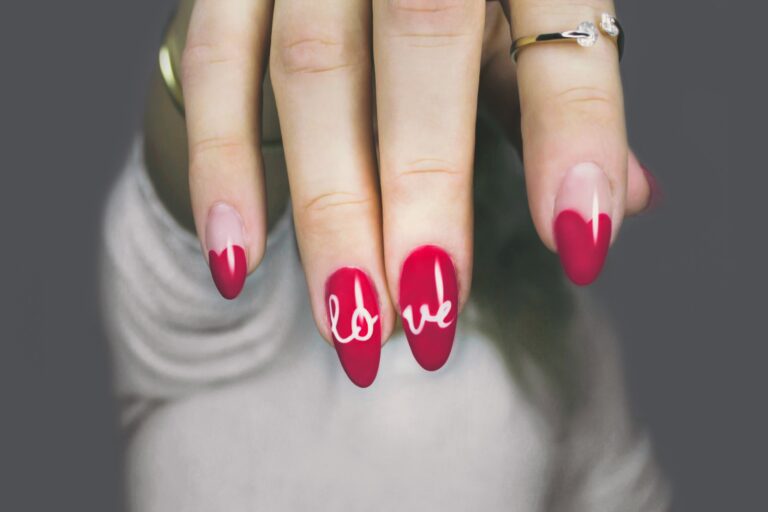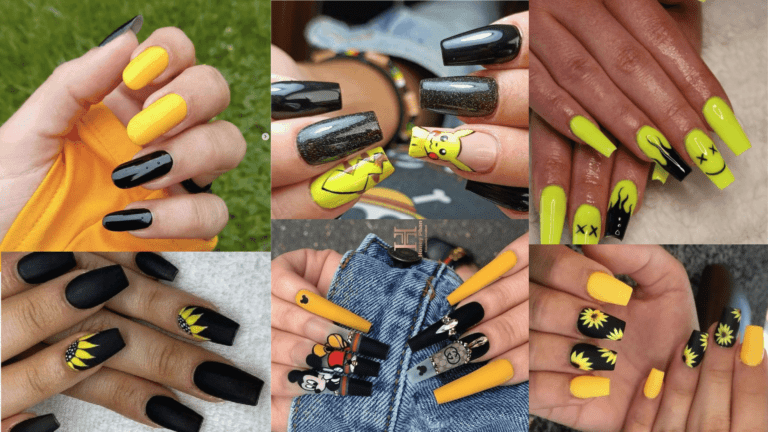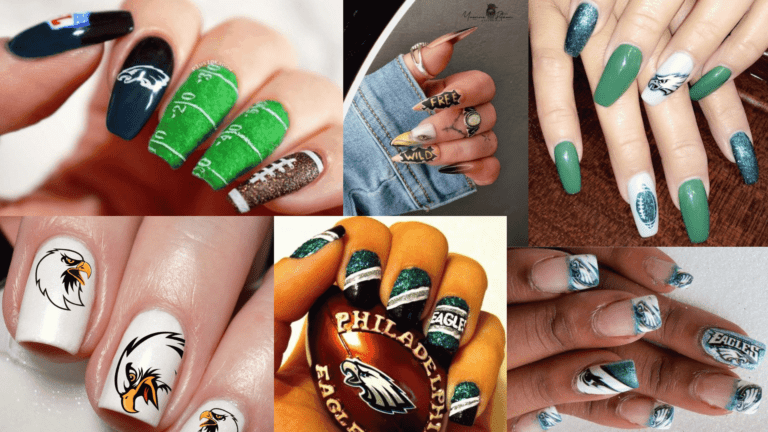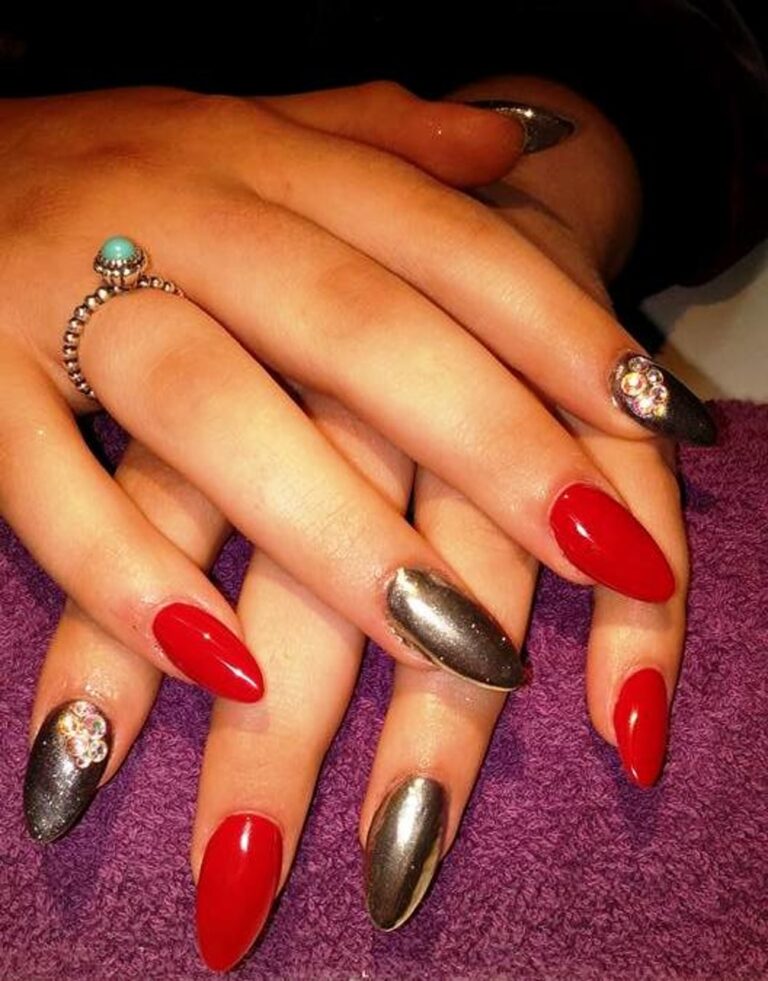“Yellow Warning: When Nails Turn Yellow Disclosed”
Yellow nails can be a cause for concern, often indicating an underlying issue that needs attention. In this article, we will explore the causes, diagnosis, treatment options, preventive measures, psychological impact, and common myths associated with yellow nails. Understanding these aspects is crucial for maintaining nail health and addressing any potential concerns.
Key Takeaways
- Yellow nails can be caused by fungal infections, nail polish staining, underlying medical conditions, and lifestyle factors.
- Diagnosing yellow nail syndrome involves recognizing symptoms beyond discoloration, considering medical history, and undergoing specific tests and procedures.
- Treatment options for yellow nails include over-the-counter remedies, prescription medications, home remedies, and advanced treatments like laser therapy.
- Preventive measures for maintaining nail health include practicing good nail hygiene, choosing the right nail care products, focusing on diet and nutrition, and scheduling regular medical check-ups.
- The psychological impact of nail discoloration can lead to social stigma, self-esteem issues, and the need for coping strategies or professional help.
Unveiling the Causes of Yellow Nails

Fungal Infections: The Common Culprit
Fungal infections are the most prevalent cause of yellow nails, often resulting from an overgrowth of fungi in, under, or on the nail. These organisms thrive in warm, moist environments, making the nail bed an ideal breeding ground.
The infection begins at the tip of the nail and works its way back to the base, progressively leading to changes in color, thickness, and overall nail structure. Symptoms may include brittleness, crumbling of the nail edges, and sometimes a slight foul odor.
- Early Detection: Notice any changes in nail color or texture.
- Cleanliness: Keep nails clean and dry.
- Proper Footwear: Wear breathable shoes and change socks regularly.
Tip: If you suspect a fungal infection, consult a healthcare provider promptly to prevent further complications.
Nail Polish Staining: A Cosmetic Concern
Frequent use of nail polish can lead to an unwanted cosmetic issue: yellowing nails. This discoloration is often the result of pigments in the polish that adhere to the surface of the nail, especially when darker shades are used. To prevent staining, it’s advisable to apply a clear base coat before the colored polish.
Removal techniques also play a role in nail health. Aggressive scrubbing or the use of harsh chemicals can damage the nail bed and exacerbate yellowing. Instead, opt for gentle, acetone-free removers and minimize direct contact with the polish.
Tip: Always give your nails a break between polishes to allow them to breathe and recover from any potential staining.
While nail polish staining is primarily a cosmetic concern, it’s important to differentiate it from other causes of yellow nails, such as infections or underlying health conditions. If you notice persistent yellowing despite taking preventive measures, consider consulting a healthcare professional.
Underlying Medical Conditions: When to Worry
Yellow nails can be a sign of underlying medical conditions that require attention. Conditions such as psoriasis and thyroid disease can manifest as yellow discoloration of the nails. It’s important to consult a healthcare professional if you notice persistent yellowing of the nails, especially when accompanied by other symptoms such as changes in nail texture or thickness. Early diagnosis and treatment are crucial in managing these underlying conditions effectively. If you suspect an underlying medical issue, seek medical advice promptly to address the root cause of the nail discoloration.
Lifestyle Factors and Environmental Influences
The color and condition of our nails can be significantly affected by our daily habits and the environment we are exposed to. Smoking, for example, is a well-known lifestyle factor that can lead to yellowing of the nails due to the nicotine and tar in cigarettes. Similarly, frequent use of nail polish, especially darker shades, can stain the nails over time, even after the polish is removed.
Exposure to certain chemicals, whether in the workplace or through the use of household cleaning products, can also contribute to nail discoloration. It’s important to wear protective gloves when handling potent chemicals to minimize this risk. Additionally, prolonged or excessive exposure to sunlight can cause oxidation of the nail keratin, leading to a yellow hue.
- Lifestyle Factors
- Smoking
- Frequent use of nail polish
- Environmental Influences
- Chemical exposure
- Sun exposure
Tip: To prevent yellowing of nails, consider wearing a clear base coat before applying nail polish and limit direct sun exposure to your nails.
Diagnosing Yellow Nail Syndrome

Symptoms Beyond Discoloration
While the hallmark of Yellow Nail Syndrome (YNS) is the distinct yellowing of the nails, there are additional symptoms that may accompany this change. These symptoms can provide further clues to the underlying cause and help in the diagnostic process.
- Thickening of the nails
- Altered nail growth rate
- Possible detachment of the nail from the nail bed (onycholysis)
- Curvature of the nails
It’s crucial to observe these symptoms in conjunction with the yellow discoloration, as they may indicate more than a cosmetic issue. For instance, nail thickening and onycholysis could suggest a fungal infection, while changes in nail growth and curvature might point to a systemic condition.
Tip: Consistent observation of nail changes is important for early detection and treatment of potential health issues.
The Role of Medical History in Diagnosis
A thorough review of a patient’s medical history is a pivotal step in diagnosing conditions that may cause yellow nails. This includes a detailed discussion of any previous nail conditions, systemic diseases, and family history of similar symptoms. Understanding the patient’s background can often provide clues that lead to a more accurate diagnosis.
For instance, a history of respiratory issues or lymphedema could suggest Yellow Nail Syndrome, a rare condition often associated with yellow nail discoloration. Additionally, exposure to certain medications or chemicals should be considered, as they can also contribute to nail changes.
Remember: A comprehensive medical history is not just about past illnesses. It should also encompass lifestyle factors such as smoking or frequent use of nail polish, which can contribute to the yellowing of nails over time.
Tests and Procedures for Confirmation
To confirm the diagnosis of yellow nails, a variety of tests and procedures may be employed. A common first step is the collection of a nail sample, which is then sent to a laboratory for analysis. This can determine the presence of a fungal infection, which is a frequent cause of nail discoloration.
A thorough examination of the nail from multiple perspectives is also critical. Medical professionals may examine the nail laterally, aerially, and frontally to gather comprehensive information that aids in diagnosis.
Tip: Always consult a healthcare provider for a proper nail assessment to avoid misdiagnosis.
For more definitive results, specialized lab tests such as periodic acid-Schiff (PAS) staining and polymerase chain reaction (PCR) may be conducted. These tests are particularly useful for identifying specific pathogens or conditions that affect nail health.
Treatment Options for Yellow Nails

Over-the-Counter Remedies and Their Efficacy
When it comes to addressing yellow nails with over-the-counter remedies, it’s essential to consider the efficacy of the available products. Some key factors to keep in mind include the active ingredients, application method, and duration of treatment. Here’s a brief overview of the common over-the-counter options:
- Clotrimazole (FungiCure Intensive)
- Tolnaftate (Fungi-Nail, Opti-Nail)
- Undecylenic Acid
These OTC products are designed to treat the fungus on the skin around the nail bed. It’s important to follow the instructions carefully and consult a healthcare professional if the condition persists or worsens.
Tip: Consistency and patience are key when using over-the-counter remedies for yellow nails. It’s important to give the treatment time to work and maintain a regular application routine for optimal results.
Prescription Medications: What to Expect
When considering prescription medications for yellow nails, it’s important to understand the potential benefits and risks. Terbinafine is a commonly prescribed oral antifungal medication that has shown promising results in treating fungal infections of the nails. It belongs to the group of antifungals and is known for its efficacy in addressing nail discoloration caused by fungal growth. Patients undergoing this treatment may experience improvement in nail color and texture over time. However, it’s essential to consult a healthcare professional for personalized advice and to be aware of possible side effects and contraindications.
If you’re exploring prescription options, it’s crucial to stay informed about the specific medication, its mode of action, and the expected timeline for noticeable changes. Additionally, monitoring any changes in nail health and discussing them with a healthcare provider is vital for effective management of yellow nails.
For individuals considering prescription medications, it’s advisable to maintain open communication with healthcare professionals and adhere to the prescribed treatment plan. This collaborative approach ensures that any concerns or developments related to the medication can be addressed promptly, leading to better outcomes for nail health and overall well-being.
Home Remedies: Do They Work?
The allure of home remedies for yellow nails often lies in their accessibility and the perception of being natural alternatives. However, the effectiveness of such treatments can vary widely, and some may even cause further harm if not used correctly.
Tea tree oil is a popular choice due to its antifungal properties, and anecdotal evidence suggests it can be beneficial. Similarly, soaking nails in a mixture of baking soda and water is thought to remove stains, but scientific backing for these methods is limited.
Tip: Always perform a patch test before applying substances to your nails to ensure you do not have an allergic reaction.
While home remedies can be a first line of defense, they should not replace professional medical advice, especially if the discoloration persists or is accompanied by other symptoms.
Advanced Treatments: Laser Therapy and Beyond
When over-the-counter remedies and prescription medications fall short, individuals with yellow nails may turn to advanced treatments like laser therapy. This high-tech option uses concentrated light to target and destroy fungal infections beneath the nail surface, often with minimal side effects.
- Laser therapy has shown promise in providing long-term relief*, but it’s not a one-size-fits-all solution. Multiple sessions may be required, and results can vary based on the severity of the infection and individual response to treatment.
For those seeking alternatives to pharmacological interventions, advanced treatments offer a ray of hope. Beyond laser therapy, options such as photodynamic therapy (PDT) and surgical nail removal are also available, each with its own set of considerations.
Remember: Always consult with a healthcare professional before opting for advanced nail treatments to ensure they are suitable for your specific condition.
Preventive Measures to Maintain Nail Health

Best Practices for Nail Hygiene
Maintaining nail hygiene is crucial for preventing discoloration and infections. It’s important to keep nails clean and dry, as prolonged exposure to moisture can promote fungal growth. Regularly trimming nails straight across helps prevent ingrown toenails and other complications.
- Moisturizing* the nails and cuticles is also essential, especially after exposure to harsh chemicals or detergents. When washing hands, use a gentle soap and ensure thorough drying. Here are some additional tips for optimal nail care:
- Avoid biting or picking at your nails.
- Use clean and sanitized nail care tools.
- Wear gloves when cleaning or handling irritants.
Tip: Always moisturize after using hand sanitizer, as alcohol can dry out the nails and skin, leading to brittleness.
Choosing the Right Nail Care Products
Selecting the right nail care products is essential for maintaining healthy and attractive nails. It’s important to choose items that not only enhance the appearance of your nails but also contribute to their strength and health. Here are some key considerations when choosing your nail care essentials:
- Base Coat: A quality base coat is the foundation of a flawless manicure, protecting your nails from staining and providing a smooth surface for color application.
- Nail Polish: With a myriad of colors and finishes available, select polishes that express your style while being free of harmful chemicals.
- Top Coat: To seal in your manicure and ensure long-lasting wear, a durable top coat is indispensable.
When exploring the various types of manicures, such as gel, shellac, dip powder, and acrylic, it’s crucial to understand their impact on nail health and choose accordingly. For instance, some treatments may require more frequent touch-ups or can be more damaging to the nail bed over time.
Tip: Always read product labels and opt for nail care items that are free from toxic ingredients like formaldehyde, toluene, and dibutyl phthalate (DBP).
Remember, the right tools and products are just as important as the techniques used. Dive into comprehensive guides and consult with experts in the nail care industry to gain valuable insights into the products that will best suit your needs. Your path to informed nail choices should be guided by meticulous analysis, comprehensive reviews, and a commitment to nail health.
Diet and Nutrition: The Internal Approach to Nail Care
The health of your nails is not only influenced by external care but also significantly by what you consume. A balanced diet rich in essential nutrients can play a pivotal role in maintaining strong and healthy nails. Protein is the building block of keratin, the substance that nails are primarily composed of, making it crucial to include protein-rich foods like chicken, fish, eggs, and beans in your diet.
Certain vitamins and minerals are particularly beneficial for nail health. For example, biotin, found in nuts, seeds, and leafy greens, has been linked to stronger nails. Iron is another important nutrient; an iron deficiency can lead to brittle nails, so it’s important to eat iron-rich foods such as red meat and spinach.
Tip: Consistently including a variety of these nutrients in your meals can help prevent nail discoloration and brittleness.
While the impact of diet on nail health is supported by small studies, it’s essential to approach this internal strategy as part of a comprehensive nail care routine that includes proper hygiene and the use of appropriate nail care products.
Regular Medical Check-Ups for Early Detection
Incorporating regular medical check-ups into your healthcare routine is a proactive step towards maintaining overall nail health. These check-ups can be instrumental in the early detection of nail-related anomalies, which might be indicative of more serious health issues.
- Physicians often examine nails during routine health assessments, as they can reflect the body’s general state. For instance, nail changes may signal nutritional deficiencies or systemic diseases. It’s crucial to inform your healthcare provider about any noticeable changes in your nail’s color, texture, or shape.
Tip: Always report new or worsening nail symptoms to your doctor, as they could be early signs of underlying health conditions.
By staying vigilant and seeking professional advice at the onset of symptoms, individuals can ensure timely intervention and potentially prevent complications.
The Psychological Impact of Nail Discoloration

Social Stigma and Self-Esteem Issues
The discoloration of nails can lead to more than just physical symptoms; it often carries a social stigma that affects individuals on a psychological level. The perception of having unhealthy or unattractive nails can significantly impact a person’s self-esteem and confidence, leading to a reluctance to engage in social activities or a constant need to hide their hands.
Social interactions are fundamental to our well-being, and when these are compromised due to embarrassment or shame about one’s appearance, it can lead to feelings of isolation. This is particularly true in cases where the yellowing is noticeable and difficult to conceal. The impact is not just superficial; it can resonate deeply with one’s sense of self and identity.
Remember: The importance of addressing the psychological aspects of nail discoloration is as crucial as treating the physical symptoms. Compassion and understanding from peers can make a significant difference in the emotional well-being of those affected.
Coping Strategies for Aesthetic Concerns
Living with yellow nails can be a distressing experience, affecting one’s self-image and social interactions. It’s important to acknowledge these feelings and seek healthy coping strategies. One effective approach is to focus on what can be controlled, such as the care and appearance of nails through regular maintenance and the use of nourishing products.
- Acceptance is key; understanding that nail discoloration does not define your worth can be liberating. Engaging in creative nail art or exploring new nail care routines can also serve as therapeutic outlets. Here are some strategies to consider:
- Embrace nail care as a form of self-care and allocate time for regular manicures.
- Experiment with nail colors and designs that make you feel confident.
- Connect with others who share similar experiences for support and advice.
Tip: Remember, your nails are an extension of your style and should be treated as a canvas for self-expression. Embracing this mindset can significantly reduce the stress associated with aesthetic concerns.
When to Seek Professional Help
While many instances of nail discoloration can be addressed with home care or over-the-counter treatments, certain situations warrant professional medical advice. If you’ve tried various remedies without success, or if your yellow nails are accompanied by other symptoms such as pain, swelling, or changes in nail shape, it’s time to consult a healthcare provider.
- Seek professional help if yellow nails are persistent and unresponsive to home treatments.
- If yellow nails are associated with other symptoms like pain or swelling, don’t delay in seeking medical advice.
Tip: Early intervention can prevent potential complications and ensure more effective treatment. Don’t hesitate to reach out to a dermatologist or podiatrist if you’re concerned about the health of your nails.
Navigating Misinformation: Myths vs. Facts

Debunking Common Myths About Yellow Nails
When it comes to yellow nails, misinformation can spread just as quickly as the condition itself. One prevalent myth is that nails need to breathe. In reality, nails are made of keratin, a type of protein that does not require air exchange. Another common misconception is that acetone-based products are inherently harmful. While excessive use can lead to dryness, acetone is a safe and effective solvent for nail polish removal when used responsibly.
Tip: Always moisturize your nails after using acetone to prevent dryness and maintain nail health.
Many believe that white spots on nails indicate a calcium deficiency, but these spots are typically the result of minor trauma to the nail bed. Chemicals in nail products are often blamed for nail damage; however, it’s the misuse or overuse of these products that is the real issue. Lastly, the idea that yellow nails are always a sign of fungal infection is a half-truth. While fungus can cause discoloration, other factors such as staining from nail polish or underlying health conditions can also lead to yellowing.
By understanding these myths and the facts behind them, individuals can better care for their nails and seek appropriate treatment when necessary.
Scientifically Proven Facts About Nail Health
When it comes to nail health, there are several scientifically proven facts that are essential to understand. Firstly, nails are composed of keratin, a tough and protective protein that also forms the structure of hair and skin. This composition makes nails resilient and capable of withstanding daily activities. Additionally, the growth rate of nails varies between individuals, with an average growth rate of approximately 3 millimeters per month. Moreover, the appearance and texture of nails can provide valuable insights into an individual’s overall health, serving as indicators of nutritional deficiencies or underlying medical conditions. Understanding these facts is crucial for maintaining optimal nail health and overall well-being.
How to Spot Pseudoscience in Nail Care Advice
In the realm of nail care, it’s crucial to distinguish between sound advice and misleading pseudoscience. One key indicator of pseudoscience is the promise of quick fixes or miracle cures. Healthy nails are the result of consistent care and cannot be achieved overnight. Be wary of products or treatments that claim to work wonders in an implausibly short time frame.
Another red flag is the lack of scientific backing. Trustworthy advice should be grounded in research and evidence, not just anecdotal success stories. When evaluating nail care tips, look for information that is supported by studies or expert consensus.
Tip: Always question the source of nail care advice. If the information comes from someone trying to sell a product or service, it may be biased. Seek out guidance from reputable professionals or scientific literature.
Remember, maintaining healthy nails is a journey, not a destination. It involves a holistic approach that includes proper hygiene, nutrition, and sometimes medical intervention. By staying informed and skeptical, you can navigate through the sea of misinformation and make choices that truly benefit your nail health.
In today’s digital age, navigating misinformation is more important than ever. With the abundance of information available online, it’s crucial to distinguish between myths and facts. At NAILinspire.com, we are committed to providing accurate and reliable information about nail art design. Our comprehensive library is a valuable resource for nail art enthusiasts, offering tips, tutorials, and inspiration. Visit NAILinspire.com to explore the ultimate online nail art design library and separate fact from fiction.
Frequently Asked Questions
What are the common causes of yellow nails?
Yellow nails can be caused by fungal infections, nail polish staining, underlying medical conditions, and lifestyle factors and environmental influences.
How is yellow nail syndrome diagnosed?
Yellow nail syndrome is diagnosed based on symptoms beyond discoloration, medical history, and specific tests and procedures for confirmation.
What are the treatment options for yellow nails?
Treatment options include over-the-counter remedies, prescription medications, home remedies, and advanced treatments such as laser therapy.
How can I prevent yellow nails and maintain nail health?
Preventive measures include practicing good nail hygiene, choosing the right nail care products, focusing on diet and nutrition, and scheduling regular medical check-ups for early detection.
What is the psychological impact of nail discoloration?
Nail discoloration can lead to social stigma and self-esteem issues. Coping strategies and knowing when to seek professional help are important.
What are some common myths about yellow nails and nail health?
There are several myths about yellow nails and nail health, and it’s important to distinguish them from scientifically proven facts and pseudoscience in nail care advice.

